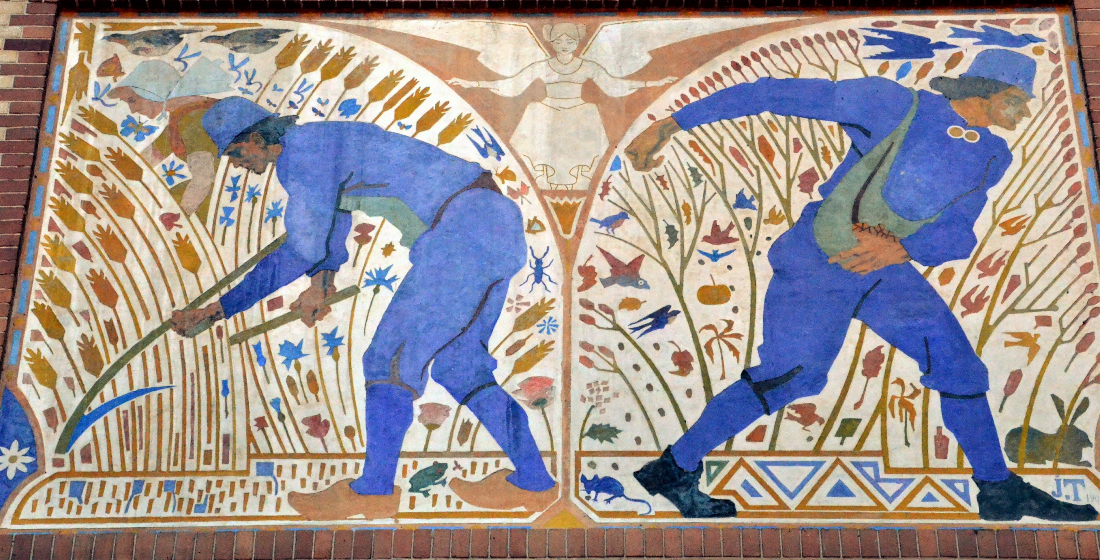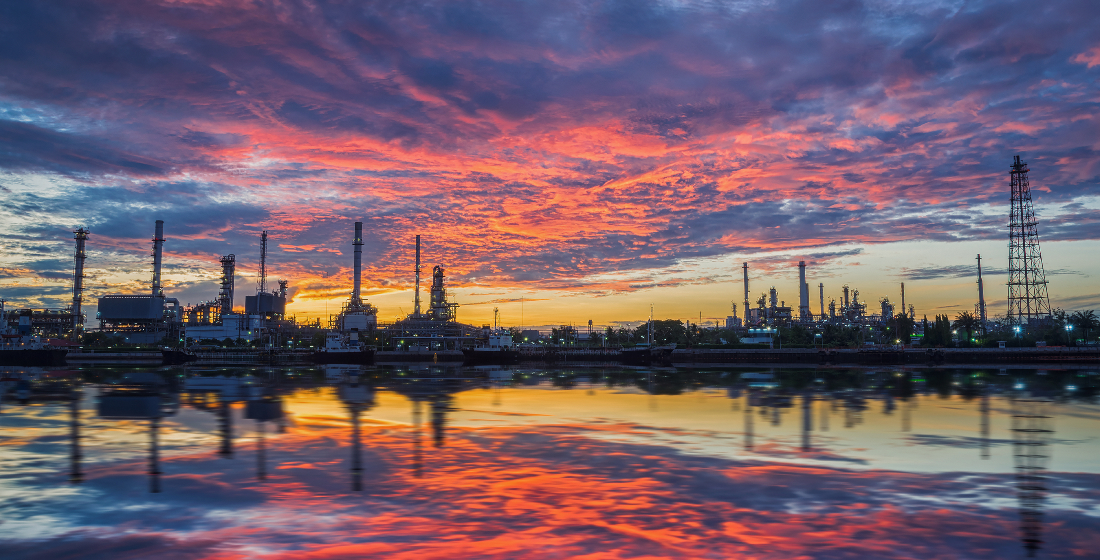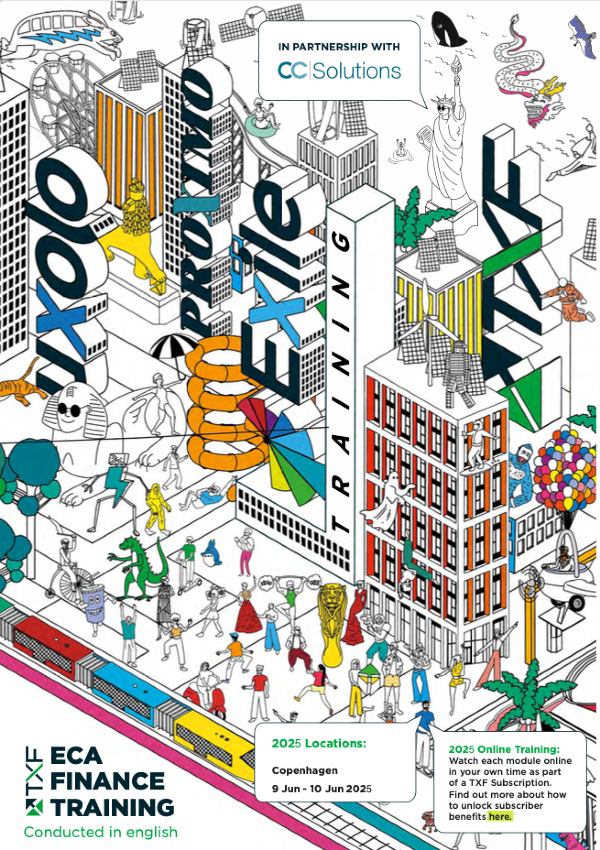A most crucial time to debate commodity flows
The war in Ukraine has disrupted commodity flows significantly. What are the short- and medium-term implications for commodity supply chains? At the TXF Global Commodity Finance Conference in Amsterdam on 10-11 May, the impact of the conflict on commodity supply chains and trading will take a leading part in the debate.

Many of you will be familiar with the famous saying that: ‘The first casualty of war is truth’. Following the Russian invasion of Ukraine, this saying is highly poignant as truth continues to not only be twisted but also turned around, and in some cases dumped completely upside down or shut out altogether. Some governments and their official news media seem to be pretending the war is not even happening! However, one thing is sure, one month in and the suffering for the Ukrainian people is continuing relentlessly and large parts of the country have been and continue to be devastated by Russian military attacks – from land, sea and air.
This war is not the Russian people’s war – it is a war wrongly designed and thrust forward by Putin. Consequently, Russia is now being squeezed by a range of sanctions on financial institutions, companies and individuals as well as through asset freezes and other financial measures. Many foreign companies have exited business in Russia or temporarily halted activities. But as we all know, despite the conflict, the sanctions and other restrictions, trade obviously goes on. At the same time, huge questions are raised. How does this conflict impact us all on a commercial and financial level? What should we be doing to protect our interests? What commercial problems have arisen and are looming regionally/globally? How will commodity supply chains be impacted? Are there immediate trading opportunities elsewhere? What might we expect in the short- to medium-term?
As TXF brings together the commodity finance community on 10-11 May in Amsterdam for the TXF Global Commodity Finance Conference, we will be able to discuss many of the issues surrounding the impact of the war in Ukraine on the commodity markets, supply chains, financing and logistics – as well as how it affects global flows and costs. We have revised the programme and have introduced some new sessions so that a better understanding of the commercial picture can be discussed.
On day 1 of the conference we will have a key supply chain disruption panel entitled: ‘Which other regions can cushion the fall?’ With heavy sanctions in place against Russia, and serious reputational risk associated with doing business even with unsanctioned Russian entities, a huge part of the commodity trade finance world has been cut off. It will also be extremely difficult to do business in Ukraine and Russia for the next few years at least. Where will banks be looking to open new credit lines in the wake of this? Do some of the emerging regions, such as Africa, LatAm, and South-East Asia, have the capacity to bridge the production gap left by Russia and Ukraine at such short notice? And what impact will this have on already skyrocketing energy and agri commodity prices?
On day 2, we have a dedicated session on the Ukraine/Russia situation entitled: ‘Can existing solutions help the fall-out?’ Supply chain disruption was an issue before the Covid pandemic, but as this, and the Russian war on Ukraine has shown, the commodity finance industry is never far from the next big threat to supply. What solutions are already available to corporates to help secure access to supply? Are these solutions enough to hedge the mammoth fall-out of the Russia/Ukraine conflict? What will happen to sectors such as grain/fertilisers, gas, and metals if severe supply shortages are ongoing?
Download the conference brochure here
As I wrote in the Weekly blog on 2 March entitled: Russia/Ukraine: economic fallout will be extreme!, some four weeks on and the serious reality of the commodity supply situation is now much more obvious. Much has been said already on the issue of Russian gas and oil in particular, but beyond the energy sector there are real and very serious concerns around global food security.
Global food security
The supply of grains and oilseeds from Ukraine and Russia – as well as fertiliser, where Russia is the world’s biggest exporter - is of immediate global concern, particularly as much of the exports go to Africa and the Middle East. Supplies are becoming increasingly tight, storage capacity in many countries is minimal and prices across the board have increased dramatically. For example, wheat prices climbed to an all-time record in Chicago earlier this month.
Russia is the largest exporter of wheat in the world and Ukraine is the fourth. Both countries are leading producers of maize (corn), barley and oilseeds such as sunflower. According to the USDA in 2020/2021 Russia and Ukraine combined accounted for approximately 26% of global wheat exports, 46% of global barley exports, and 16% of global maize (corn) exports. In addition, on the oilseeds front, Ukraine and Russia combined accounted for a staggering 80% of global exports in sunflower seed meal and sunflower seed oil in 2020/2021. As a comparison to this, International Grains Council data shows that Ukraine was the world’s fourth largest grain exporter in the 2020/21 season while Russia ranked third. The two countries combined accounted for 22% of global grain exports.
On 23 March the director-general of Unctad, Ngozi Okonjo-Iweala, stated: “It is becoming clear that the Ukraine war’s economic and humanitarian repercussions – especially rising food prices – will be felt far beyond Europe. The international community must act now to prevent some of the world’s poorest and most vulnerable people from becoming collateral damage.”
And with this in mind, just two days ago, Okonjo-Iweala, called for coordinated action to address the recent sharp rise in commodity prices that threatens food security in many countries. "Trade has been and will remain a critical means of adaptation to the mounting global shocks that the world is currently experiencing," the director-general declared. "This is not the time to retreat inward … This is the time to stress the importance of multilateralism, global solidarity and cooperation."
The war in Ukraine has caused immense human suffering and loss of life and unleashed an ongoing humanitarian crisis, the director-general noted. It has also dealt a severe blow to the global economy still recovering from the impacts of the pandemic and has raised the spectre of food shortages in countries dependent on Ukraine and Russia for imports of key staples like wheat. Already in Africa, prices of key commodities have risen by 20%-50% between January and March.
"For dozens of poor countries and tens of millions of people, basic food security is in danger," she warned. "These countries already have been some of the slowest economic recoveries from the pandemic, and international cooperation on trade is necessary to help mitigate risks of poverty, hunger, even famine and social unrest."
In the near-term, international cooperation on trade will be needed to minimise the impact of supply crunches for key commodities where prices are already high by historical standards and to keep markets functioning smoothly, the director-general said.
Okonjo-Iweala also pointed out that countries with buffer stocks that can afford to share could coordinate the release of wheat, barley, other cereals and grains and oils into international markets, thereby alleviating the supply squeeze. Countries such as the United States, Canada, Australia, Argentina, and France could increase wheat cultivation while others such as China, Germany, Morocco, Saudi Arabia, Egypt, and Nigeria could increase the global supply of fertiliser.
The severe blow to Ukrainian agriculture
With the Russian navy controlling access to the Ukrainian ports in the Black Sea and Sea of Azov, most eastern Ukrainian ports are completely blocked. Beyond this, Russia would appear to have specifically targeted some key port commodity exporting infrastructure. In Mykolayiv on the Black Sea, for example, which handles around one fifth of Ukraine’s grain exports, it has been reported that a grain exporting site owned by soft commodity trader Bunge had been destroyed. Many other international soft commodity trading companies also have facilities and silos at Ukrainian ports. While in Mariupol, heavy shelling has also severely damaged the major Azovstal steel plant.
These examples and others, led the Ukrainian agriculture minister, Roman Leshchenko, to inform the European Parliament last week: “This is a war not only in the military sense, it’s an economic war, because Ukrainian exports are metals, chemicals, machine building and grain. Having destroyed our sea access, they are destroying us economically. We wouldn’t have any income to our budget. We wouldn’t have any means to survive as a state.”
Ukraine exported around $27 billion in agricultural products in 2021, making up about half of its total export income. And, according to a Reuters report, with ports closed off, Mykola Gorbachev, chairman of the Ukrainian Grain Association, stated: “We are sitting on a potential loss of $6 billion.” This is related to wheat and maize exports which had been earmarked for export by June. He is also reported to have said Ukraine had around 20 million tonnes of wheat and corn still to export from the 2021/22 season, which ends in June, at an average price of around $300 per tonne. In addition, Ukrainian maritime officials said fighting had left around 100 foreign-flagged vessels stranded in the country’s ports.
It is also a crucial time of the year for Ukrainian agriculture as Spring planting of key crops needs to take place over the next month or so. The war makes this immensely difficult. Last year, Ukrainian farmers produced a record crop, but some farmers this year lack fuel for machinery and fertiliser for land preparation. The Ukrainian Agriculture Ministry estimates sowing areas may shrink by 30% to 50% from last year.
In the meantime, some Ukrainian grain exports are getting out. According to Bloomberg, Ukraine’s deputy economy minister, Taras Kachka, said that shippers managed to export more than 1 million tons of corn and 300,000 tons of wheat since the beginning of March, mostly from seaports that are under Ukraine’s control near the border with Romania. More exports would be possible apparently if the country’s rail network was functioning properly.
On the other hand, Russian grain exports are understood to be at near normal levels through March, with around 2 million tons of grain exported. However, going forward reports indicate that new orders are minimal compared to previous seasons. Operational risks related to delivery and payment are likely to see business plummet in coming months. Bunge has said that it has suspended new export business with Russia, although some other grain traders are continuing with Russian exports but operating in line compliant with the current imposed sanctions.
Become a TXF subscriber for unrestricted access to TXFnews.com 365 days a year
Contact us for individual and team rates by emailing subscriptions@txfmedia.com
Take a look below at some of the exclusive subscriber articles published last week
Top takeaways from TXF Americas 2022
Last week, TXF welcomed back the Americas structured trade and export finance community to the heart of Miami. Elsa Fucile from TXF discusses the key discussion points from the event.....Read on here
Shop talk: Citi’s head of commodity and energy trade talks strategy
TXF spoke to Christine McWilliams, global head of commodity and energy trade at Citi about the bank’s longer term strategy after a decade back in the commodity markets. Amid the crisis in Ukraine, and with demand resurgent, supply dislocations and commodity prices at record highs, banks are facing challenges of how to finance commodity markets. Can ESG and digitisation plans stay on track too?.....Read on here
Pricing emerges on Horizonte Minerals' ECA-backed deal
Pricing has emerged on Horizonte Minerals $346.2 million ECA-covered project financing to back its Araguaia ferronickel project in.....Read on here
Impressive syndication sees Trafigura increase back-up facility to $2.3 billion
Trafigura has successfully closed the syndication of its back-up multi-currency revolving credit facility with a final.....Read on here
To EACOP or not to EACOP?
Export credit agencies (ECAs) are said to be close to completion of their evaluations of TotalEnergies’ controversial.....Read on here
Adani’s Rajasthan renewables hybrid secures additional financing
Adani Green has raised $288 million in additional financing for its under-construction 1.96GW hybrid solar and wind projects in Rajasthan.....Read on here
Neom financing responses by end of month
Sponsors of the $5-$6.5 billion Helios Green project in Saudi have moved the deadline for bank responses for financing the scheme to.....Read on here
Arcus and GLIL refinance SMA acquisition
Arcus Infrastructure Partners and GLIL have refinanced the short-dated debt they raised in.....Read on here
Qurayyah gas-fired IPP refi evolves
Sponsors of the 3,927MW Qurayyah gas-fired power project in Saudi Arabia are looking to refinance the.....Read on here
Equinix Hyperscale closes on Sydney data centre debt
Equinix Hyperscale 2, a joint venture between PGIM Real Estate (80%) and Californian-based global digital infrastructure company Equinix (20%), has closed a.....Read on here
New global head of trade finance for AIG
Ana Velandia Evan has been appointed global head of trade finance for AIG....Read on here
ECAs approached for Ras Laffan petchem project
Sponsors of the approximately $5 billion petrochemical project at Ras Laffan in Qatar are expected to reach out to.....Read on here
WETT upsizes working capital
Wind Energy Transmission Texas (WETT) has upsized its working capital facility to $100 million....Read on here
Acciona nears close on Sao Paulo Line 6 financing
Spanish project sponsor Acciona is nearing close on a R$7 billion ($1.4 billion) financing package with....Read on here
Van Broekhoven to leave CFO role at Komgo
Kris Van Broekhoven is leaving his role as CFO at trade finance blockchain platform Komgo...Read on here
184MW Data Center in Virginia reaches financial close
Stack Innovation Holdings, a subsidiary of Stack Infrastructure USA II, has signed an.....Read on here
Obelix FTTH syndication launched
The syndication of the Obelix FTTH financing has been launched.....Read on here





